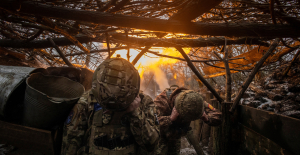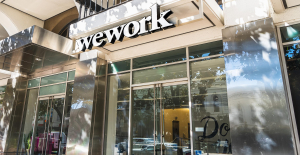It has become cold. There are many reasons to regret this, but also many to be happy about it. The most important: cheese fondue. You can enjoy that in the summer too, but when the leaves are on the paths and the evenings are dark and cold, a cheese fondue tastes even better. In order for it to be an unforgettable evening, however, you should know how to prepare it properly.
We prefer to make the Moitié-Moitié, which is French for half and half. That's what the Swiss call the fondue that's made half from Gruyère and the other half from Vacherin.
There are many other variants that are mixed with Gruyère, or Gruyere cheese. But Moitié-Moitié is eaten very often. Especially in the canton of Fribourg, which also includes La Gruyère, the capital of the cheese of the same name.
The dairy farmers in the area have it good. Your cows too. Because only milk from cows that have not been fed with silage, but only with fresh grass or hay, may be delivered to the cheese dairies that make the world-famous Gruyère from it.
The other half of the milk goes to the nearby Cailliers chocolate factory, which has equally high standards for the milk. You can taste that in each of the end products.
If the cheese shop has a good selection, then you should take a more mature and a younger version of both types, half and half again. You can get Gruyère pretty much everywhere in Germany. Vacherin could be more difficult. But there are alternatives. For example Zeppelin cheese.
It comes close to the Vacherin in aroma and structure. The cheese should be a little softer, but aromatic. A well-stocked cheese seller once offered us a raclette cheese as a substitute for Vacherin. went too.
And if you add a piece of fine South Tyrolean or other mountain cheese: Go for it. And those with a herb crust are also very nice. For a meal with four people you need a kilo of cheese. If you want to get a feel for it first, you can also take 800 grams. Of course, if you add another cheese, you subtract that from the other two varieties - if the third cheese is harder, you reduce more with Gruyère, if it's softer: more with Vacherin
Of course you drink white wine with the fondue. It is also used for preparation. Best would be a Fendant, best of all a Vully from Lake Murten - or a Saint Saphorin from Lake Geneva. However, good Swiss wines are almost impossible to find in Germany.
You should bring a crate with you if you're in the area - or you can make do: For example with a Gutedel, that's the same grape as the Chasselas grape, from which many Swiss white wines are made. The wine should be light, dry and fruity - by no means too complex or aged in wooden barrels.
Swiss winegrowers rarely store their red wines in barriques either. A winemaker from Lake Murten once told me: “You know, we love our wines when they taste like the grapes they were made from. And not for wood.”
Continue with the fondue: A good kirsch is also part of it, then garlic, nutmeg and a little milk. Also Maizena, that's cornstarch, maybe it doesn't have to be, but if the cheese gets oily when it melts and the individual types don't combine properly, then the starch is good.
A caquelon is also needed. This is the pot made of baked clay or steel. And the fondue forks look different than those for meat fondue. A proper fondue fork has three or four prongs that are barbless at the end. But that has nothing to do with the fondue customs from “Asterix in Switzerland”.
Now to the work: The cheese is debarked and coarsely grated. Mix well. Then rub the pot with a clove of garlic cut in half. Then add a small cup of milk (cow) to the pot and bring to the boil. The milk can be thrown away.
Then let a good shot (one or two glasses) of white wine heat up in the caquelon. Gradually add the cheese to the hot wine, stirring constantly with a wooden spoon. The cheese will gradually dissolve - the younger or softer first. And when it all gradually heats up, it combines into a creamy sauce that bubbles gently.
If the cheese doesn't combine completely - which can happen - or is too runny, then stir a level tablespoon of cornflour with a dash of cherry and then add the whole thing to the cheese while stirring. If you buy already grated cheese for fondue in Switzerland, cornflour is often already in it. This need not be.
The ready-made fondues are not recommended at all. Also decline if a seller offers it. In Germany they like to do that when you say you need cheese for a fondue. As good as they look and as delicious as the descriptions on the packaging may be, none come close to the taste and aroma of a homemade fondue. Hands off.
If the cheese is too thick, then no cornflour is needed and the cherry is poured on without starch. If that's not enough, add a little wine afterwards. The consistency must be nice and creamy. The cheese should also nestle well against the bread. If our fondue now has the right consistency, a little nutmeg needs to be rubbed in.
Immediately put it on the rechaud, which is already flickering on the dining table. It can be the one from the meat fondue. But if you really enjoy fondue, you should soon be able to buy a real rechaud from Switzerland. A tea light or something similar is not enough.
Now: pull out the forks, skewer small pieces of bread and stir them through the pot. A bit of fresh and coarsely ground black pepper belongs on the plate. Tap the cheesy piece of bread there so that one side is slightly covered with the pepper - and enjoy. hmm It's about the best thing you can eat when the ingredients are right. So take a decent cheese.
If the fondue bubbles too much during the meal, reduce the rechaud flame. If the cheese is lumpy, make it hotter. But there is not much to settle, the matter is plastered after ten minutes.
In addition to the bread, you can also add small boiled potatoes. As a side dish there are pickled gherkins (cornichons), pickled onions or other pickled things (beetroot, pumpkin). It's hard to get pickled cucumbers and onions in Germany that taste like they do in Switzerland.
The substitute should not be too herbal, too dill, or too spicy. Please take this as a suggestion, it is of course a matter of taste which pickles go well with the fondue. A bit of bacon in thin slices goes well with it - preferably root bacon from Switzerland or South Tyrol. Or Bündner Fleisch. But you can also omit that. The pickles and onions are enough.
The wine is drunk. Very cold, so wear a cooling sleeve, even if it comes out of the fridge. If you don't like alcohol, you can add tea or just water. Drinking the kirsch afterwards or in between is also a matter of taste. But no harm.
And because it wasn't greasy enough, a couple of nice berries with a dollop of double cream or double cream would go well as a dessert, for example. The Swiss also like to eat meringue with cream and some fruit for dessert afterwards. It might have something to do with upbringing.
In Switzerland, meringues are called meringues. That sounds somehow more sophisticated. A crème brulée or a fine ice cream would also be good. Or a mousse au chocolat, also white if you like. An espresso is also a good way to end a fine, incomparable cheese fondue. And nobody has to jump into the lake once the bread has fallen into the fondue.

 What is chloropicrin, the chemical agent that Washington accuses Moscow of using in Ukraine?
What is chloropicrin, the chemical agent that Washington accuses Moscow of using in Ukraine? Poland, big winner of European enlargement
Poland, big winner of European enlargement In Israel, step-by-step negotiations for a ceasefire in the Gaza Strip
In Israel, step-by-step negotiations for a ceasefire in the Gaza Strip BBVA ADRs fall almost 2% on Wall Street
BBVA ADRs fall almost 2% on Wall Street Children born thanks to PMA do not have more cancers than others
Children born thanks to PMA do not have more cancers than others Breast cancer: less than one in two French women follow screening recommendations
Breast cancer: less than one in two French women follow screening recommendations “Dazzling” symptoms, 5,000 deaths per year, non-existent vaccine... What is Lassa fever, a case of which has been identified in Île-de-France?
“Dazzling” symptoms, 5,000 deaths per year, non-existent vaccine... What is Lassa fever, a case of which has been identified in Île-de-France? Sánchez cancels his agenda and considers resigning: "I need to stop and reflect"
Sánchez cancels his agenda and considers resigning: "I need to stop and reflect" “Amazon product tester”: the gendarmerie warns of this new kind of scam
“Amazon product tester”: the gendarmerie warns of this new kind of scam “Unjustified allegations”, “promotion of illicit products”… Half of the influencers controlled in 2023 caught by fraud repression
“Unjustified allegations”, “promotion of illicit products”… Half of the influencers controlled in 2023 caught by fraud repression Extension of the RER E: Gabriel Attal welcomes a “popular” ecology project
Extension of the RER E: Gabriel Attal welcomes a “popular” ecology project WeWork will close 8 of its 20 shared offices in France
WeWork will close 8 of its 20 shared offices in France “We were robbed of this dignity”: Paul Auster’s wife denounces the betrayal of a family friend
“We were robbed of this dignity”: Paul Auster’s wife denounces the betrayal of a family friend A masterclass for parents to fill in their gaps before Taylor Swift concerts
A masterclass for parents to fill in their gaps before Taylor Swift concerts Jean Reno publishes his first novel Emma on May 16
Jean Reno publishes his first novel Emma on May 16 Cannes Film Festival: Meryl Streep awarded an honorary Palme d’Or
Cannes Film Festival: Meryl Streep awarded an honorary Palme d’Or Omoda 7, another Chinese car that could be manufactured in Spain
Omoda 7, another Chinese car that could be manufactured in Spain BYD chooses CA Auto Bank as financial partner in Spain
BYD chooses CA Auto Bank as financial partner in Spain Tesla and Baidu sign key agreement to boost development of autonomous driving
Tesla and Baidu sign key agreement to boost development of autonomous driving Skoda Kodiaq 2024: a 'beast' plug-in hybrid SUV
Skoda Kodiaq 2024: a 'beast' plug-in hybrid SUV The home mortgage firm rises 3.8% in February and the average interest moderates to 3.33%
The home mortgage firm rises 3.8% in February and the average interest moderates to 3.33% This is how housing prices have changed in Spain in the last decade
This is how housing prices have changed in Spain in the last decade The home mortgage firm drops 10% in January and interest soars to 3.46%
The home mortgage firm drops 10% in January and interest soars to 3.46% The jewel of the Rocío de Nagüeles urbanization: a dream villa in Marbella
The jewel of the Rocío de Nagüeles urbanization: a dream villa in Marbella Europeans: a senior official on the National Rally list
Europeans: a senior official on the National Rally list Blockade of Sciences Po: the right denounces a “drift”, the government charges the rebels
Blockade of Sciences Po: the right denounces a “drift”, the government charges the rebels Even on a mission for NATO, the Charles-de-Gaulle remains under French control, Lecornu responds to Mélenchon
Even on a mission for NATO, the Charles-de-Gaulle remains under French control, Lecornu responds to Mélenchon “Deadly Europe”, “economic decline”, immigration… What to remember from Emmanuel Macron’s speech at the Sorbonne
“Deadly Europe”, “economic decline”, immigration… What to remember from Emmanuel Macron’s speech at the Sorbonne These French cities that will boycott the World Cup in Qatar
These French cities that will boycott the World Cup in Qatar Champions Cup: Toulouse with Flament and Kinghorn against Harlequins, Ramos replacing
Champions Cup: Toulouse with Flament and Kinghorn against Harlequins, Ramos replacing Tennis: still injured in the arm, Alcaraz withdraws from the Masters 1000 in Rome
Tennis: still injured in the arm, Alcaraz withdraws from the Masters 1000 in Rome Sailing: “Like a house that threatens to collapse”, Clarisse Crémer exhausted and in tears aboard her damaged boat
Sailing: “Like a house that threatens to collapse”, Clarisse Crémer exhausted and in tears aboard her damaged boat NBA: Patrick Beverley loses his temper and throws balls at Pacers fans
NBA: Patrick Beverley loses his temper and throws balls at Pacers fans


















